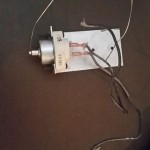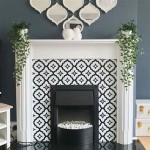Fireplace With Glass: Aesthetics, Efficiency, and Safety
Fireplaces with glass doors or enclosures have become increasingly popular in modern homes. These units offer a blend of aesthetic appeal, enhanced energy efficiency, and increased safety compared to traditional open fireplaces. Understanding the various aspects of glass-enclosed fireplaces is crucial for homeowners considering installation or replacement of existing units. This article delves into the different types, benefits, considerations, and maintenance aspects of fireplaces with glass.
The integration of glass into fireplace design is not merely a cosmetic upgrade; it fundamentally alters the way heat is managed and how combustion occurs. The glass serves as a barrier, controlling airflow to the fire and preventing the uncontrolled escape of heat up the chimney. This controlled environment contributes to a more complete and efficient burn, reducing the amount of smoke and particulate matter released into the atmosphere. Furthermore, the glass acts as a safety shield, preventing embers and sparks from escaping the firebox and potentially causing a fire hazard.
Types of Fireplaces With Glass
Fireplaces with glass enclosures are available in various types, each with its own characteristics and benefits. These types are generally categorized by the fuel they burn, the style of the unit, and the specific function that the glass enclosure serves.
Wood-Burning Fireplaces With Glass Doors: These are traditional wood-burning fireplaces retrofitted with glass doors. The doors can be either hinged or sliding, and they are typically made of tempered glass. When closed, the doors help to regulate airflow, increase heating efficiency, and contain sparks. However, it's important to note that some older or improperly installed glass doors can restrict airflow too much, leading to incomplete combustion and increased creosote buildup in the chimney. Newer models are designed with adjustable air vents to optimize combustion.
Gas Fireplaces With Glass: Gas fireplaces, fueled by natural gas or propane, commonly feature a glass front as a standard part of their design. The glass provides a safety barrier and enhances the visual appeal of the flames. These fireplaces can be direct-vent, vent-free (though vent-free models are subject to specific regulations and not recommended in all locations), or B-vent, each affecting the combustion process and venting requirements. Direct-vent models are the most efficient, as they draw combustion air from outside and vent exhaust gases directly outdoors, preventing the depletion of indoor air.
Electric Fireplaces With Glass: Electric fireplaces, while not burning actual fuel, often incorporate a glass front to enhance the realism of the simulated flames. These fireplaces use electric coils and LED lighting to create the illusion of a fire. The glass front provides a safe surface to touch and adds to the aesthetic appeal. Electric fireplaces are easy to install, require no venting, and offer a convenient heating solution for supplemental heating.
Fireplace Inserts With Glass: Fireplace inserts are designed to fit into existing masonry fireplaces. They are available in wood-burning, gas, and electric models, all typically featuring a glass front. The glass door of an insert helps to seal the fireplace opening, preventing drafts and maximizing heat output. Inserts are an efficient way to convert an inefficient open fireplace into a more effective heating appliance.
Benefits of Glass-Enclosed Fireplaces
The integration of glass into fireplace design provides several key benefits, influencing energy efficiency, safety, and overall user experience. These advantages make glass-enclosed fireplaces a popular choice for homeowners seeking a modern and functional heating solution.
Increased Energy Efficiency: Open fireplaces are notoriously inefficient, with a significant portion of the heat escaping up the chimney. Glass doors or enclosures help to reduce this heat loss by creating a barrier that restricts airflow. This allows the fire to burn longer and more efficiently, reducing fuel consumption and lowering heating costs. Properly sealed glass doors can significantly improve the heating efficiency of a fireplace, particularly in older homes.
Enhanced Safety: One of the primary benefits of glass-enclosed fireplaces is the enhanced safety they provide. The glass acts as a physical barrier, preventing embers and sparks from escaping the fireplace and potentially igniting nearby carpets, furniture, or other flammable materials. This is particularly important in homes with children or pets. The glass also prevents curious hands or paws from getting too close to the flames, reducing the risk of burns.
Improved Air Quality: Glass enclosures help to control the combustion process, leading to a more complete and efficient burn. This reduces the amount of smoke and particulate matter released into the room, improving indoor air quality. This is especially important for individuals with respiratory sensitivities or allergies. Furthermore, in the case of gas fireplaces, direct-vent models ensure that combustion byproducts are vented directly outdoors, preventing the buildup of harmful gases indoors.
Aesthetic Appeal: Glass-enclosed fireplaces offer a modern and stylish aesthetic. The glass provides a clear view of the flames, creating a cozy and inviting atmosphere. The clean lines and sleek design of many glass-enclosed fireplaces complement a variety of home decor styles. The ability to see the flames clearly without the danger of sparks or embers allows for a more relaxing and enjoyable fireplace experience.
Considerations for Choosing a Fireplace With Glass
Selecting the right fireplace with glass requires careful consideration of various factors, including fuel type, venting requirements, size, style, and budget. Understanding these factors will ensure that the chosen fireplace meets the specific needs and preferences of the homeowner.
Fuel Type: The choice of fuel type – wood, gas, or electric – will significantly influence the overall performance, cost, and maintenance requirements of the fireplace. Wood-burning fireplaces offer a traditional aesthetic and the unique aroma of burning wood, but they require more maintenance and produce more emissions than gas or electric models. Gas fireplaces are convenient and efficient, but they require a gas line connection. Electric fireplaces are the easiest to install and operate, but they do not provide the same ambiance as real flames.
Venting Requirements: Proper venting is essential for the safe and efficient operation of wood-burning and gas fireplaces. Wood-burning fireplaces require a properly sized chimney to vent smoke and combustion gases. Gas fireplaces can be direct-vent, vent-free, or B-vent, each with its own specific venting requirements. Direct-vent fireplaces are the most efficient and safest, as they draw combustion air from outside and vent exhaust gases directly outdoors. Vent-free fireplaces do not require venting, but they are not recommended in all locations due to concerns about indoor air quality. Electric fireplaces do not require any venting, making them a convenient option for homes without existing chimneys or gas lines.
Size and Style: The size and style of the fireplace should be chosen to complement the room's decor and heating needs. A larger fireplace may be necessary to heat a large room, while a smaller fireplace may be sufficient for a smaller space. The style of the fireplace should match the overall aesthetic of the room, whether it's traditional, modern, or contemporary. Fireplaces with glass are available in a variety of styles, including freestanding units, wall-mounted units, and built-in units.
Budget: The cost of a fireplace with glass can vary widely depending on the fuel type, size, style, and features. Wood-burning fireplaces typically have lower upfront costs but higher operating costs due to the cost of firewood. Gas fireplaces have higher upfront costs but lower operating costs due to the relatively low cost of natural gas or propane. Electric fireplaces have the lowest upfront costs and operating costs, but they may not provide the same level of heating power as wood-burning or gas models. It's important to consider the total cost of ownership, including installation, fuel, and maintenance, when choosing a fireplace.
Maintenance and Safety Tips
Proper maintenance is essential for ensuring the safe and efficient operation of a fireplace with glass. Regular cleaning, inspection, and repair can help to prevent problems and extend the lifespan of the fireplace. Additionally, adhering to safety guidelines is crucial for preventing fires and other hazards.
Glass Cleaning: The glass on a fireplace can become dirty with soot and creosote over time, reducing the visibility of the flames. Regular cleaning is necessary to maintain a clear view. Use a specialized fireplace glass cleaner or a mixture of vinegar and water to clean the glass. Avoid using abrasive cleaners, as they can scratch the glass. Allow the fireplace to cool completely before cleaning the glass.
Chimney Inspection and Cleaning: For wood-burning fireplaces, regular chimney inspection and cleaning are essential for preventing creosote buildup, which can lead to chimney fires. The Chimney Safety Institute of America (CSIA) recommends that chimneys be inspected at least once a year and cleaned as needed. Hire a qualified chimney sweep to inspect and clean the chimney. For gas fireplaces, regular inspection of the venting system is also important to ensure proper venting and prevent carbon monoxide buildup.
Firewood Storage: Store firewood properly to prevent insect infestations and reduce the risk of fire. Store firewood off the ground and away from the house in a dry, well-ventilated area. Cover the firewood with a tarp to protect it from rain and snow. Never store firewood inside the house, as it can attract insects and create a fire hazard.
Carbon Monoxide Detectors: Install carbon monoxide detectors in the home, especially near sleeping areas. Carbon monoxide is a colorless, odorless gas that can be produced by incomplete combustion in fireplaces. Ensure the detectors are functioning correctly by testing them regularly and replacing the batteries as needed. If a carbon monoxide alarm sounds, evacuate the house immediately and call emergency services.

Glass Fireplace Doors

Pleasant Hearth Arrington Medium Glass Fireplace Doors Ar 1021 The Home Depot

Duluth Forge Vent Free Stainless Outdoor Gas Fireplace Insert With Crystal Fire Glass Media 24 000 Btu 170094 The Home Depot

Hearth Craft Fireplace Glass Door Piccolo Hvacdirect Com

Pleasant Hearth At 1001 Ascot Medium 37 50 X 31 Build Com

Pleasant Hearth Alsip Large Glass Fireplace Doors Ap 1132 The Home Depot

Standard Size Masonry Fireplace Doors Fixed Frame

34 Modern Fireplace Designs With Glass For The Contemporary Home Decoist

Telum Black Glass Fireplace Screen Reviews Crate Barrel

The Value Of Glass Doors For Your Fireplace Royal Oak Mi
Related Posts








